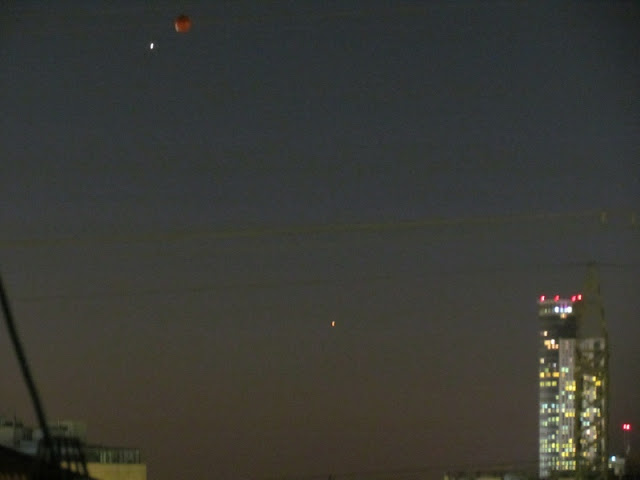What are planets? Planets are moving stars. While most of the stars are fixed in the sky rotating as a whole unit and never changes their location relative to each other, the planets are different and may appear in different places in the sky, not the whole sky but rather a thin band which is called the Zodiac. From very ancient times, people notice that there are 7 stars which move, and the Greeks called them planets (which mean wanderers). These ancient 7 "classical planets" were the Sun, the Moon, Mercury, Venus, Mars, Jupiter and Saturn. Earth of course was in the middle of the universe, still and not moving, and Uranus and Neptune too faint to see.
Today there is a formal definition of planets, There are exp-planets (Planets orbiting stars other than the sun), and many planets has planets of their own (moons). However, Planet is still moving in the sky and it is very easy to observe this movement with your own eye just like our ancient predecessor thousands of years ago.
To observer the movement of the planets you will need to identify them. It is not hard since planets are quite bright, being easily noticed in the sky (especially Venus and Jupiter), and also because they are not part of any constellations in the zodiac. If you have troubles try using software such as
stellarium or applications for you iPhone or Androids mobile devices. In order to see the movement you will have to choose a reference start, a bright star which is close to the planet and you can measure the distance between them.
The planets which are closest to the sun, Mercury and Venus are moving fast. However Mercury is hard to find so leave it alone. Jupiter and Saturn moves slow so it takes at least two weeks between observations to see noticeable change.
The following photos present Jupiter and Mercury near one of their conjunctions. I used Jupiter as a reference star to demonstrate the movement of Mercury. Jupiter is also moving but in a period of 5 days its movement is negligible. Let's start with the photos. Jupiter is always the left dot and mercury is seen much below it.
 |
| Jupiter and Mercury day 1 |
After a day Merucry is still below Jupiter.
 |
| Jupiter and Mercury day2 |
After another day, Merucry and Jupiter are almost at the same height. The photo was taken in twillight so it may be hard to see both planets which appears as pale white dot. Try to enlrage the photo to see better.
 |
| Jupiter and Mercury day3 |
After another day Mercury is higher than Jupiter.
 |
| Jupiter and Mercury day4 |
And after another day, Mercury is much higher than Jupiter.
 |
| Jupiter and Mercury day 5 |
After another day Mercury and Jupiter were too far to take a photo together.




